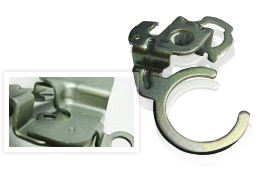For professional commercial brazing companies, brazing stainless steel to copper is one of the specializations they offer. Many of the top companies are able to work with customers requiring small or large orders, which can make easy work of this type of otherwise tricky brazing task.
With a professional brazing service handling the job all the issues that are potential problems will be addressed. This will allow the large scale brazing of stainless steel to copper services that can make short work out of large volume jobs and still produced quality brazing on every joint.
This is accomplished through experience and expertise in designing the joint, choosing the right brazing filler, and also in the complete preparation of the surfaces of the joint prior to brazing. With automation of many of the processes by these companies, each job of brazing stainless steel to copper is done to perfection in a much shorter time than manually processing the joint would be.
However, if you need to do it on your own for a specific job, here are some simple tips for brazing stainless steel to copper that you can use to do the best possible job with any type of joint.
Clean the Surfaces
For all brazing stainless steel to copper jobs, it is essential that the surfaces be completely free from any type of oil, grease, dirt, dust or metal shavings. Any type of contaminant within the joint will obstruct the capillary action and not allow the filler to be drawn into that area of the joint.
Even if not visible, this will create a pocket or a weak area in the joint. With time, pressure and use this weakness can result in a failure of the joint which will translate into a failure of the component.
Avoid Overheating the Metals
The goal of brazing stainless steel to copper is not to melt the copper, which has a lower melting point than the stainless, but to provide enough heat for the filler metal to melt and flow. Select the right filler metal for the job, and also be sure to select the right flux to allow the filler to flow evenly around the joint. Not all fluxes are appropriate for all filler metals, but there are handy charts online to help match these two essential components.
Another key to brazing stainless steel to copper is not to allow the flame to sit for too long on one area of the filler metal. Generally pre-placing the filler metal around the joint and continually moving the torch will provide a continual, lower temperature heat that will create just the flow needed to move into the joint and form a strong braze.


